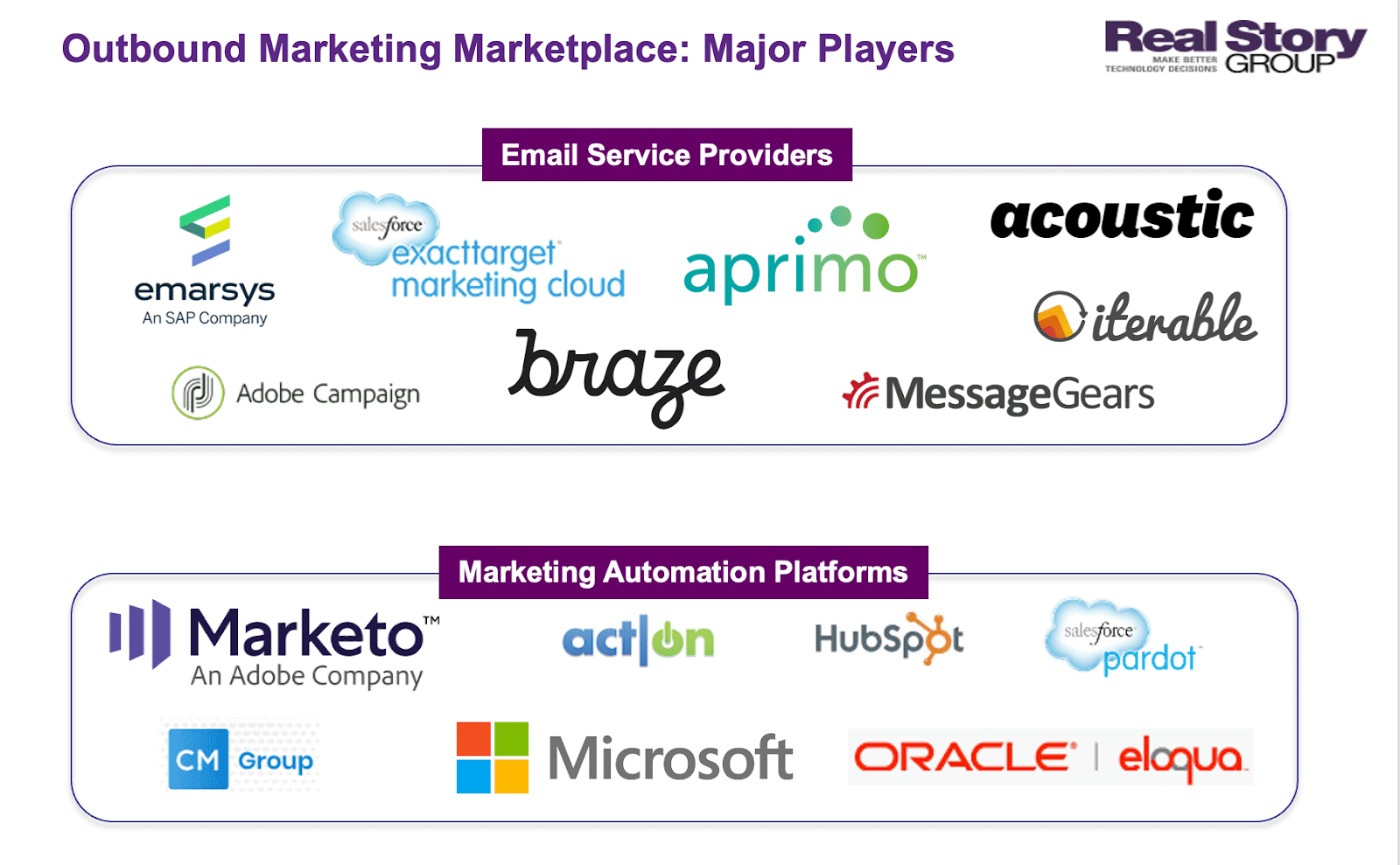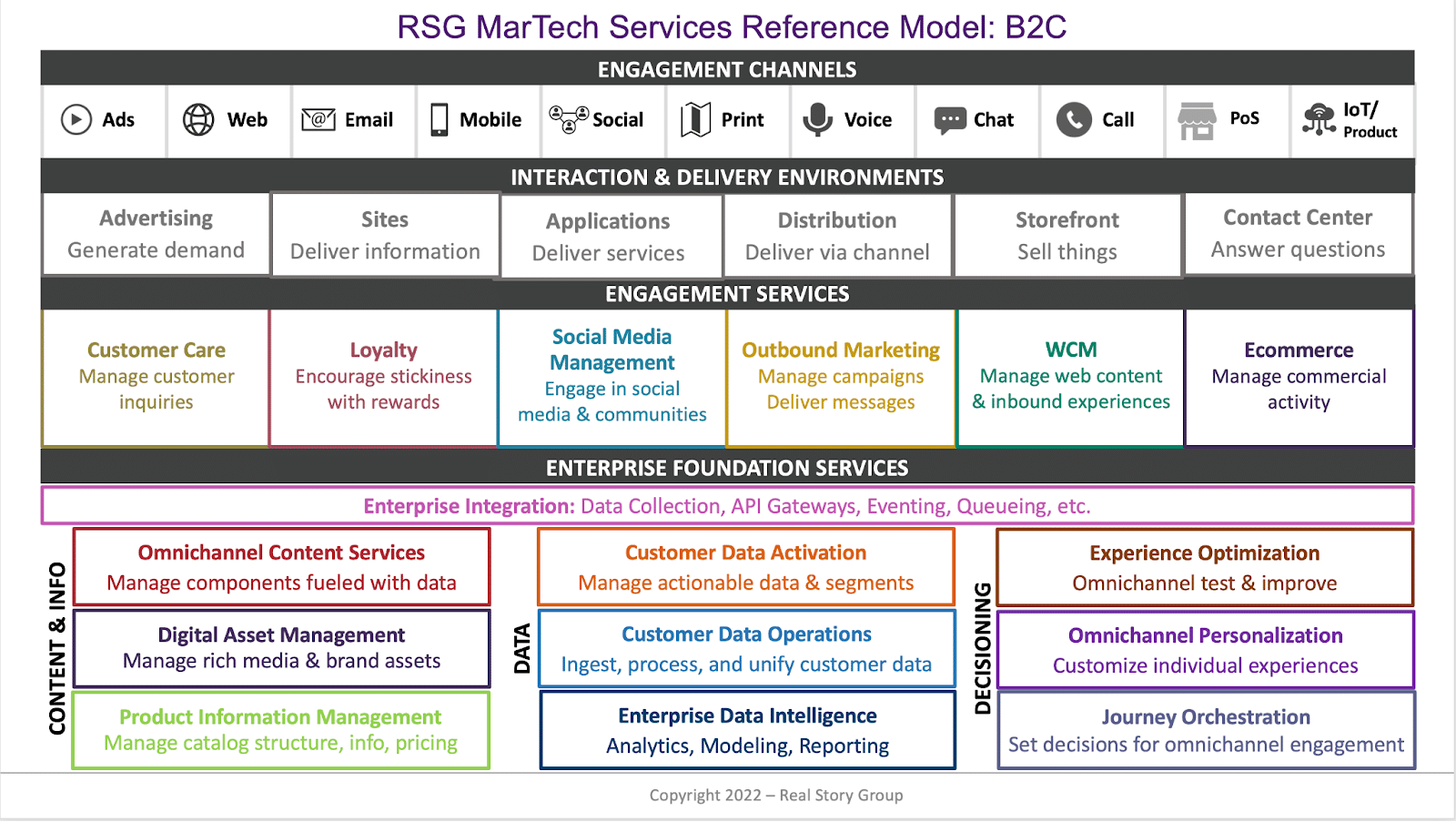The future of outbound marketing in an omnichannel stack
Enterprises want key services to operate omnichannel, yet outbound marketing platforms are becoming outdated. Here’s how it might change.
The growing importance of omnichannel consumer engagement impacts all levels of the enterprise martech stack. Greater composability clarifies useful service boundaries, enabling enterprises to right-size their martech investments in nearly every domain. Outbound marketing has probably evolved the least in these respects.
Understood today as campaign and messaging management tech, outbound marketing represents a holdout against the broader evolutionary trend. Yet, vendors are not immune to structural changes taking place in martech — and this part of your stack may well become the least recognizable by the end of this decade.
Outbound marketing technology today
Marketers have always loved outbound marketing: It offers proactive messaging that promises immediacy, actionability, measurement and flow that wasn’t available via traditional advertising. The old means of direct mail and telemarketing gave way in the digital era to email marketing. Thus, it’s no accident that email lies at the center of most major outbound marketing platforms today.
Almost immediately, email marketing platforms built campaign-creation palettes so that you could send sequenced emails, including branching based on customers’ reactions. Over the past decade, these campaign subsystems enabled marketers to trigger messages in other channels, like SMS, in-app or outbound telephony and even on-demand print mailers. This allowed vendors to boast of their “omnichannel” capabilities, but really they coordinate just multichannel outbound messaging.
Typical platforms today divide into two camps:
- Mass-market B2C email services providers (ESPs).
- B2B and high-end / high-touch B2C marketing automation platforms (MAPs).

Some MAPs further evolved additional capabilities, including potentially account-based marketing, inbound personalization, CRM integration and more robust reporting. In short, they have become a mini martech stack-in-a-box, especially for mid-sized B2B or considered-purchase B2C firms where a salesperson enters the mix.
This world is changing, though, especially at the enterprise tier.
The great decoupling
Beginning in the late 2010s, a new martech architectural pattern emerged that decoupled shared, foundational enterprise services from specific customer engagement channels. It began with customer data platforms (CDPs), which unify customer data in a single enterprise repository, sparing customer-facing systems from managing complex data going forward.

We call this new pattern “legless,” and the overall approach is broadening beyond data to include enterprise content and personalization services. What’s driving the transition to legless architecture?
As we emerge from the pandemic, there’s a new grammar to customer experience where the person on the other side of the screen becomes the subject of the interaction and no longer the object.

The most important change for this discussion is that heavyweight, service-rich outbound marketing platforms are increasingly anachronistic in a world where enterprises want key services to operate omnichannel. Let’s examine from the perspective of a decoupled, composable, “legless” stack.
Decoupling data, content and decisioning
Decoupling data management from campaign management is a big win for enterprises. They no longer have to use their ESPs as quasi-CDPs (a role for which they are very poorly suited) and can instead focus on campaign optimization. This means operational change as more segments and individual message triggers get set at an enterprise level. On the other hand, this is the only way to scale.
The advent of CDP adoption in large B2B enterprises puts great pressure on legacy MAPs, which traditionally relied (albeit reluctantly) on Salesforce or other CRM platforms for the single source of truth about customer data. It’s harder for them to integrate with CDPs. More generally, as stacks decompose, the need for an omnibus martech platform also erodes. I predict the demise of legacy, higher-end MAPs by the late-middle 2020s, if not sooner.
More and more enterprises are also decoupling content management from outbound marketing platforms. Here again, most ESPs and MAPs truly stink at content management. But more importantly, they tend to fare poorly at component block management — a critical precondition for more personalized messaging that all of you want to do.
To be sure, not every DAM or CMS will integrate neatly with an outbound marketing platform. But we have seen proper omnichannel content platforms (OCPs) excel at this.
Finally, some enterprises are beginning to decouple decisioning (e.g., enterprise campaigns) from messaging platforms. This has the potential to totally disrupt the market because simple message-sending is now a commodity.
This trend started in the past decade as many enterprises decoupled transactional messaging from their outbound campaign platforms — simplifying their architectures and saving a ton of money along the way.
Today, we see enterprise efforts towards more omnichannel orchestration logic (for example, things like “next best action” decisioning) as the hub that drives more customer interaction, including campaigns. Finally, the sometimes intense need to better integrate media ad spend with campaigns on owned channels is compelling a new look at what systems generate which messages.
A new model
This last trend is potentially the most profound. Some of our far-thinking clients already manage journeys and campaigns at a lower level in their stack. As for messaging, they deploy very cheap, highly-performant programmatic (API-based) senders for delivery and metrics gathering. The firms doing this now tend to be more born-digital enterprises, but it will become mainstream in a few years.
There are many challenges to this legless approach. But automation and scalability require it. Enterprises will generate fewer ad-hoc campaigns, with more always-on listening and better response.
Most firms will want to govern and execute AI-fueled messages at an enterprise level rather than at the edge. You’re likely to see ever-more centralized marketing ops yielding improved customer experiences. With lower volumes of more targeted messaging, you’ll achieve better outbound and inbound engagement.
It will take some time, but you can start heading there. And along the way, you may want to reconsider your choice of outbound marketing platform.
The post The future of outbound marketing in an omnichannel stack appeared first on MarTech.
(14)


